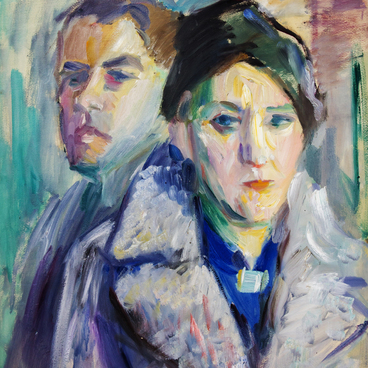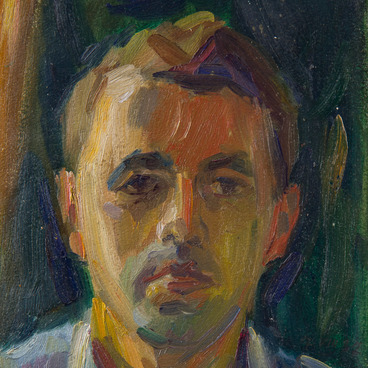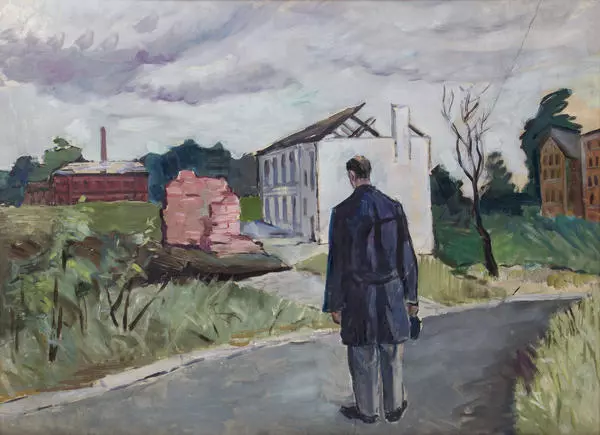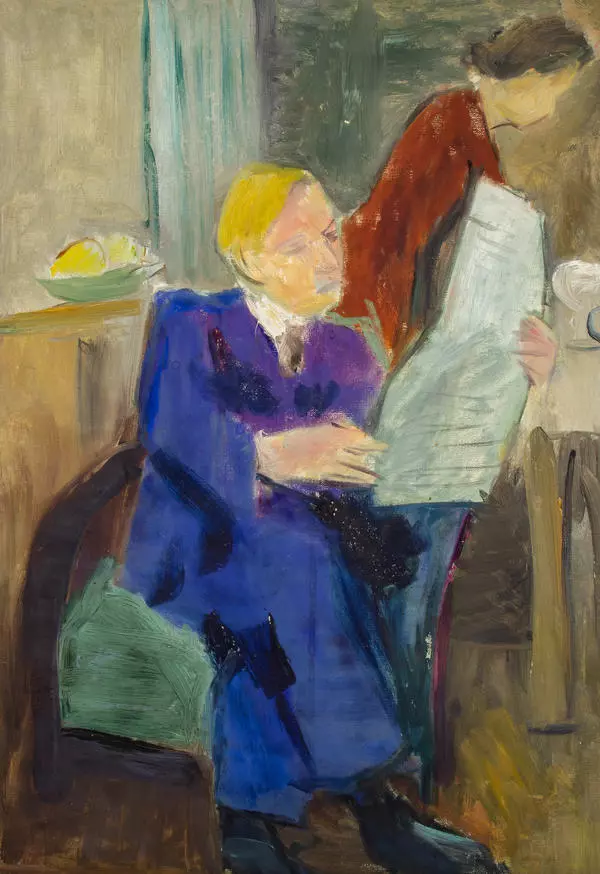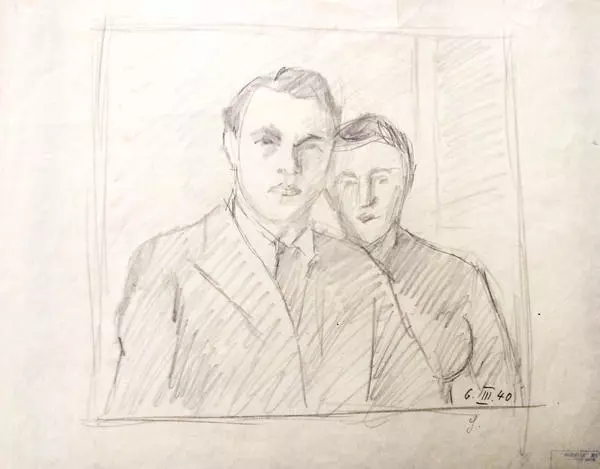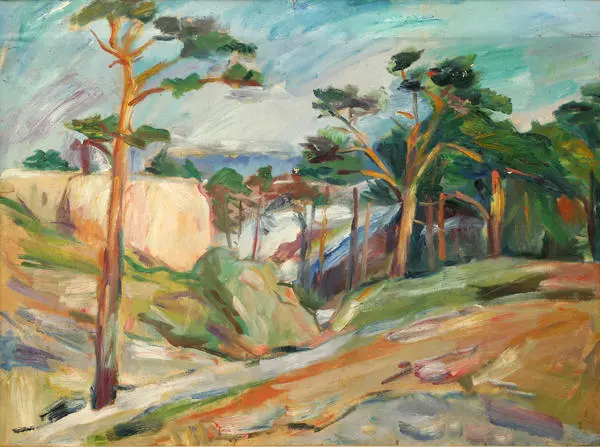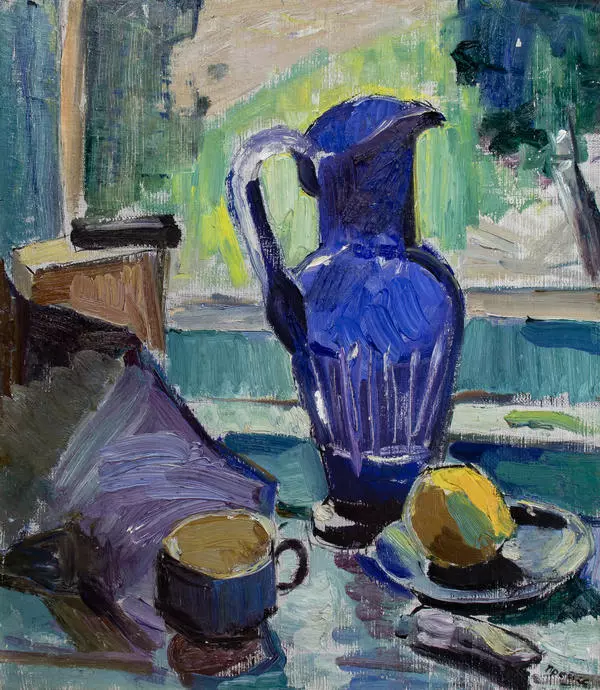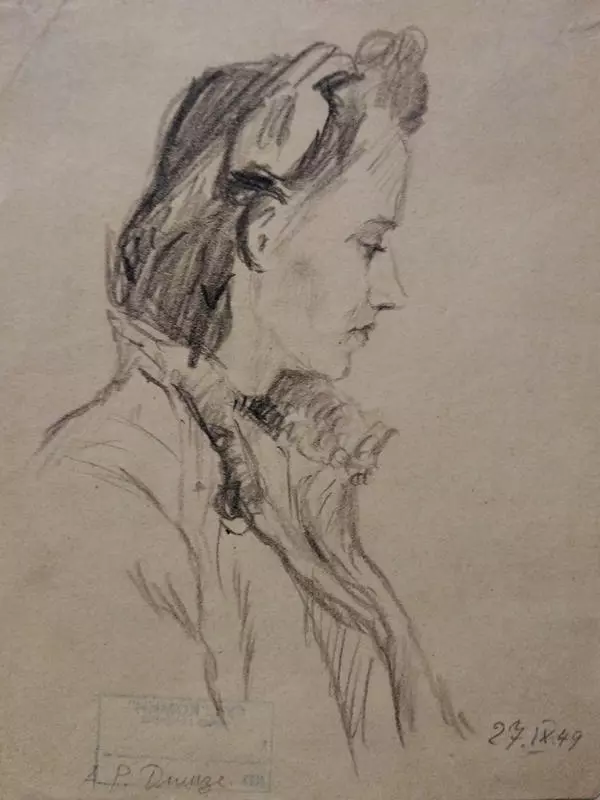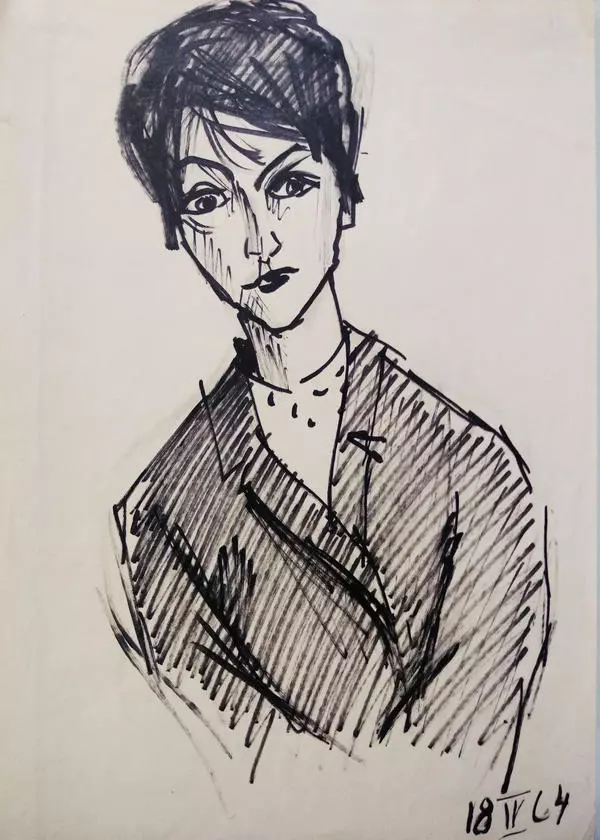In the creative heritage of Jurgis Preiss, apart from portraits, there are many still life paintings. They are distinguished by simplicity, sophistication and similar subjects: fruits, books, flowers. The still life Rhododendrons created in the 1930s belongs to the early, European, period of Jurgis Preiss' work. In those years the artist traveled a lot across Europe, paintings of that time are dominated by light, bright and joyful colors. The painting Rhododendrons of 1936 was one of the best examples of his early painting. Jurgis Preiss painted it on simple paper, from nature and in one session - in memory of some strong feeling with which those flowers were associated.
1 / 2
Rhododendrons
Время создания
1936
Размер
76x55 cm
76×55 cm
76×55 cm
Техника
Paper on cardboard, oil
3
Открыть в приложении#1
Jurgis Preiss
Rhododendrons
#2
The painting was made in the expressionism manner: wide free strokes, bright and cheerful tones. In the center of the table, in the folds of white cloth, there is a vase with bright pink rhododendrons. Nearby is an open book. Jurgis Preiss tried to convey the joy of the moment, the triumph of life using pure and juicy colors. In his diaries he wrote about the European period of his creative work: ‘I want to see bright joyful colors around me.’
Preiss' manner of painting in the 1930s could be called neo-traditionalism. Artists of that direction rethought the experience of previous masters and created their paintings, testing new tools, color schemes and forms. This artistic genre was actively developed in the European culture of the 1920s-1930s.
Preiss' work was greatly influenced by the circumstances of his life. The artist, who did not support the Nazi sentiments, had been cooperating with the Soviet intelligence since the 1920s. When the Nazis came to power in 1933, Preiss and his wife left Germany and visited different cities: Vena, Moscow, Paris, Helsinki. All that time Preiss painted. It was during that period when he met the cartoonist Herluf Bidstrup and the writer Bertolt Brecht, communicated with Pablo Picasso, became acquainted with the original paintings by Rembrandt, Van Gogh and Grunewald. All that influenced his painting later.
There are two versions of the still life Rhododendrons. One of them was presented by Preiss to Zoya Yestamonova, a Kemerovo journalist and author of the documentary novel The Fate of the Artist Hans-Jurgis Preiss, the second one - to the adopted daughter Lyudmila Biryukova, who handed it over to the museum in 1986.
In the novel by Zoya Yestamonova there is a passage dedicated to a still life painting: ‘Someone’s hands raised it. Someone asked: ‘So how is it? ’ Someone answered: ‘Too active a stain.’ And the still life with a flower again was placed in the corner. When at last it found a place in the exhibition, it touched the wall and immediately dissolved the dense layer of plaster and bricks. It was as if another window appeared in the hall, on a cloudy day it glowed as the morning sun. <…>Rhododendron, an alpine rose <…>Painted in Finland, exhibited in Paris, for some special reason it was dear to the author, who made two versions of this work and never parted with this latter one till his death.’
#3
Kemerovo Regional Museum of Fine Arts
читать дальшескрыть
00:00
00:00
1x
Rhododendrons
Время создания
1936
Размер
76x55 cm
76×55 cm
76×55 cm
Техника
Paper on cardboard, oil
3
Открыть в приложении
Поделиться


